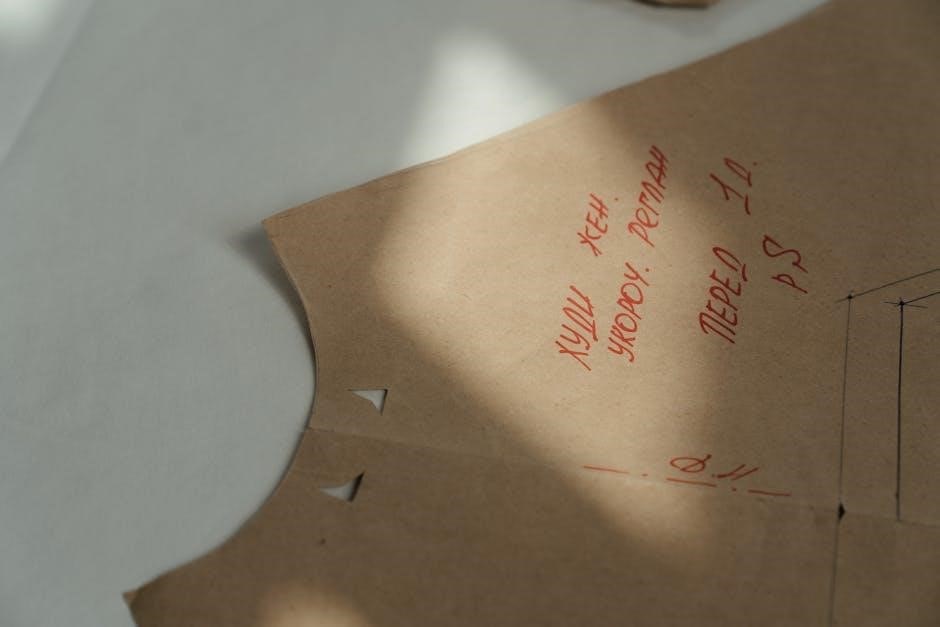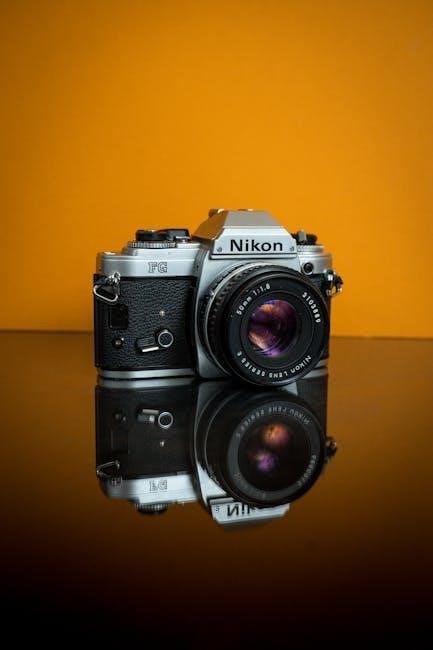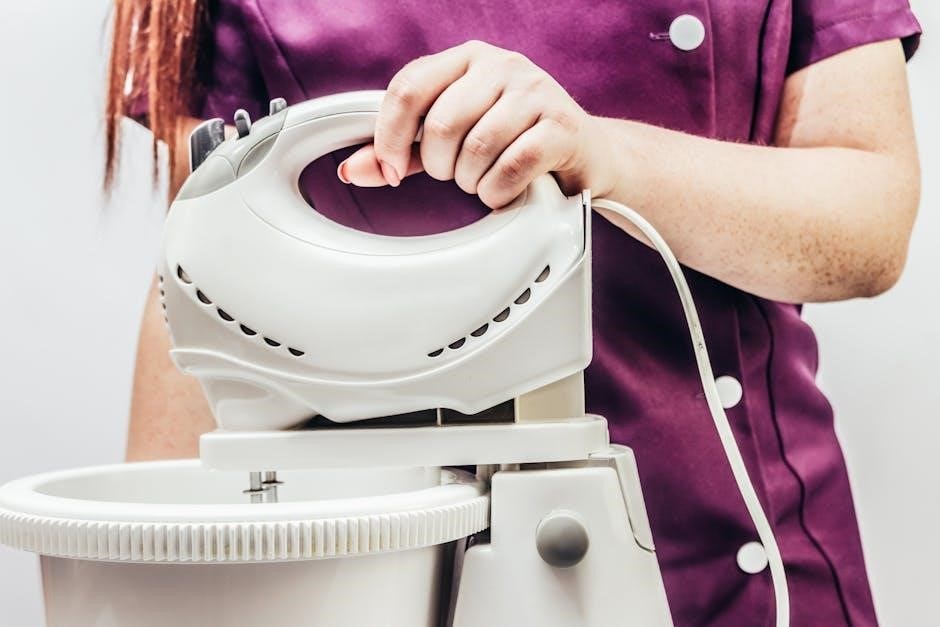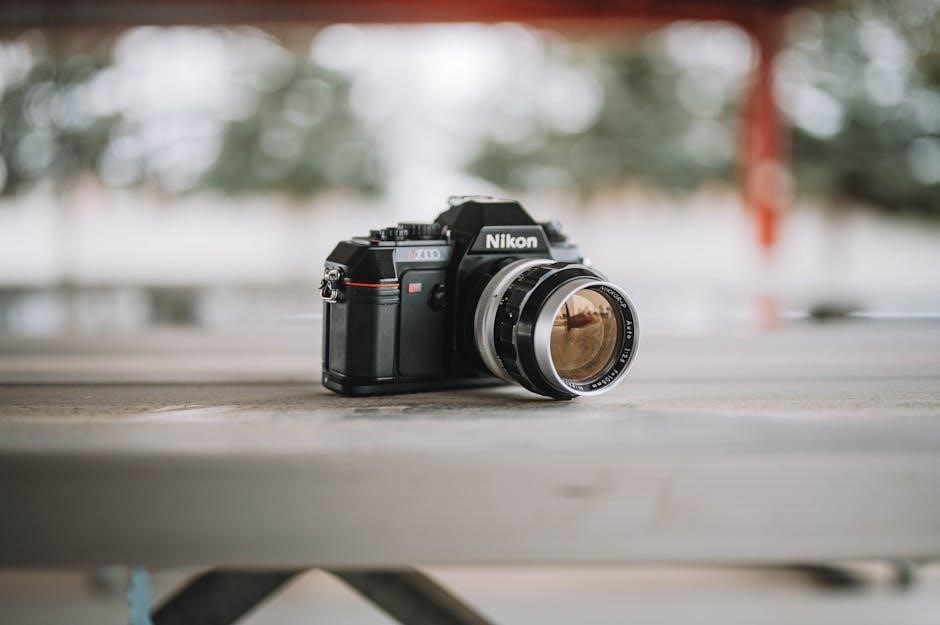Nikon EM Instruction Manual: A Comprehensive Guide
The Nikon EM is a user-friendly SLR camera designed for ease of use. This guide offers a comprehensive overview‚ covering everything from basic operation to troubleshooting. It includes vital information on the camera’s features‚ functionalities‚ and maintenance for optimal performance.
The Nikon EM‚ released in 1979‚ represented Nikon’s attempt to make SLR photography accessible to a broader audience. This compact and lightweight camera‚ sometimes marketed towards women due to its smaller size‚ aimed to simplify the photographic process. It prioritized ease of use‚ featuring an aperture-priority automatic exposure mode‚ enabling users to focus on composition while the camera handled the exposure settings. While it requires batteries to operate‚ and can occasionally be cranky‚ the EM remains a valuable tool for learning fundamental photography skills like focusing‚ metering‚ and understanding exposure. Its robust build ensures durability‚ making it a reliable companion for aspiring photographers.
Camera Overview
This section provides a detailed look at the Nikon EM’s physical attributes. We’ll cover its key external components‚ offering a visual and descriptive guide to familiarize you with the camera’s layout and design elements.
Key Features and Components
The Nikon EM boasts several key features‚ including its aperture-priority automatic exposure mode designed for carefree photography. It incorporates a silicon photodiode light meter‚ ensuring accurate exposure readings. The camera features a shutter release button‚ film winding lever‚ and a frame counter to track exposures. A battery power check button with an LED indicator is present‚ as is a self-timer. The lens mounting flange facilitates lens attachment‚ while the lens release button enables easy lens removal. The camera includes an exposure compensation button for manual adjustments.

Loading and Unloading Film
Loading and unloading film in the Nikon EM is a straightforward process. The following section will provide step-by-step instructions. This will allow you to properly load and unload your film.
Step-by-Step Instructions
To load film into your Nikon EM‚ begin by pulling up the film rewind knob to open the camera back. Insert the film cartridge‚ ensuring it sits securely. Gently pull the film leader across the camera body and insert it into the take-up spool. Advance the film using the film winding lever‚ and then close the camera back. Continue advancing the film until the frame counter displays “1”. The camera is now ready to take pictures. When unloading‚ rewind the film completely before opening the back.
Basic Operation
Operating the Nikon EM involves setting the shutter speed and aperture. The camera primarily functions in aperture-priority automatic mode. Focus manually using the lens‚ and then press the shutter release to take the picture.
Shutter Speed and Aperture Settings
The Nikon EM primarily operates in aperture-priority mode‚ meaning the user selects the aperture (f-stop)‚ and the camera automatically chooses the appropriate shutter speed for correct exposure. The aperture is set using the aperture ring on the lens‚ influencing both the amount of light entering the camera and the depth of field. For creative control‚ consider wider apertures (smaller f-numbers) for shallow depth of field and blurred backgrounds‚ or narrower apertures (larger f-numbers) for greater overall sharpness.
While the EM lacks full manual control over shutter speed‚ it does offer a “B” (bulb) setting for long exposures and a fixed 1/90th of a second setting‚ useful for flash photography.
Using the Light Meter
The Nikon EM features a built-in light meter that aids in achieving proper exposure. By understanding how to interpret the meter’s readings‚ users can capture well-balanced and accurately exposed photographs in various lighting conditions.
Understanding Exposure
Exposure in photography refers to the amount of light that reaches the camera’s sensor or film; It’s a crucial element in determining the brightness and overall quality of an image. The Nikon EM’s light meter is a valuable tool for achieving correct exposure. It measures the light in a scene and suggests settings for aperture and shutter speed. Overexposure results in a washed-out image‚ while underexposure leads to a dark image. Mastering exposure allows photographers to creatively control the mood and detail captured in their photographs. Using the EM’s meter effectively is key to consistently achieving desired results.
Lens Mounting and Compatibility
Understanding lens compatibility is vital for Nikon EM users. Correct mounting ensures proper functionality and optimal image quality. Explore the range of supported lenses‚ including Nikon Series E and AI-type Nikkors‚ for diverse photographic possibilities.
Supported Lenses: Nikon Series E and AI-type Nikkors
The Nikon EM offers compatibility with a range of lenses‚ primarily the Nikon Series E and AI-type Nikkors. These lenses provide diverse options for various photographic styles‚ from wide-angle landscapes to telephoto portraits. When mounting lenses‚ ensure proper alignment with the lens mounting index for secure attachment. Always remove the camera body cap and rear lens cap before attempting to mount a lens. Refer to the instruction manual for detailed guidance on lens mounting procedures to avoid damage. Understanding lens compatibility unlocks the camera’s full potential. Properly mounting lenses ensures the camera functions correctly;

Battery Information
The Nikon EM requires batteries to operate‚ so understanding battery information is crucial. Learn how to check the battery power‚ replace the battery when needed‚ and ensure your camera is always ready.
Checking and Replacing the Battery
The Nikon EM relies on batteries for its light meter and automatic exposure functions. To check the battery‚ locate the battery power check button and press it. Observe the LED lamp; a bright light indicates sufficient power. If the light is dim or absent‚ it’s time to replace the batteries. To replace‚ unlock the battery chamber‚ typically found on the camera’s base. Remove the old batteries and insert new ones‚ ensuring correct polarity. Securely lock the chamber after replacement to avoid any operational issues; Proper battery maintenance ensures reliable performance.

Common Issues and Troubleshooting
Like any vintage camera‚ the Nikon EM can exhibit quirks. This section addresses common problems such as light meter inaccuracies‚ shutter malfunctions‚ and film advance issues. We offer practical troubleshooting steps to resolve these problems.
Addressing Cranky Behavior
The Nikon EM‚ while generally reliable‚ can sometimes exhibit “cranky behavior‚” a term often used to describe its occasional unresponsiveness. This can manifest as the camera not firing‚ the light meter acting erratically‚ or the film advance mechanism jamming. Before assuming a major malfunction‚ check the battery; a weak battery is a frequent culprit. Ensure the battery is correctly installed and has sufficient power. Clean the battery contacts gently. If the problem persists‚ try resetting the camera by removing the battery for a few minutes. Also‚ inspect the lens contacts and clean them if necessary. Remember‚ patience and methodical troubleshooting are key to resolving these minor issues and restoring your EM to optimal functionality.

Accessories
Enhance your Nikon EM with dedicated accessories like the MD-E winder for rapid film advance and the SB-E flash unit‚ designed specifically for optimal exposure and seamless compatibility.
MD-E Winder and SB-E Flash Unit
The Nikon EM’s capabilities can be significantly expanded with its dedicated accessories. The MD-E winder automates film advance‚ enabling continuous shooting for capturing fast-paced action. Its ergonomic design integrates seamlessly with the EM body. The SB-E flash unit is tailored for the EM‚ providing accurate and automatic flash exposure. This compact flash enhances low-light photography and ensures well-lit images. Together‚ the MD-E and SB-E transform the Nikon EM into a versatile tool for various photographic scenarios. These accessories enhance convenience‚ speed‚ and creative possibilities‚ making the EM a more complete system. These units are often sought after by collectors and enthusiasts alike.
Maintenance and Care
Ensuring the longevity of your Nikon EM requires regular maintenance. Proper storage‚ cleaning‚ and occasional servicing are essential. This section details how to keep your camera in optimal condition‚ preserving its functionality for years to come.
Ensuring Longevity
To ensure the longevity of your Nikon EM‚ consider these maintenance practices. Always store the camera in a cool‚ dry place when not in use. Avoid exposing it to extreme temperatures or humidity‚ as this can damage internal components. Regularly clean the lens with a soft‚ lint-free cloth to remove dust and fingerprints. Check the battery compartment for corrosion and clean it as needed. If the camera is not used for extended periods‚ remove the battery to prevent leakage. Periodically inspect the shutter and film advance mechanism for smooth operation. If you encounter any issues‚ consult a qualified technician for servicing. These simple steps will help keep your Nikon EM in excellent working condition for years.



